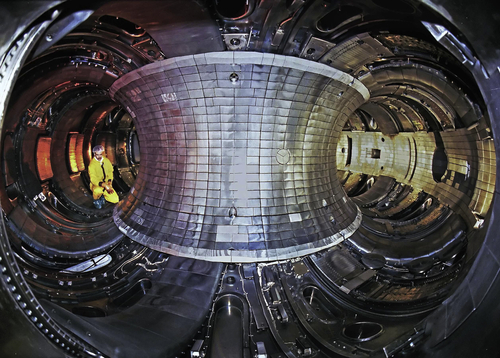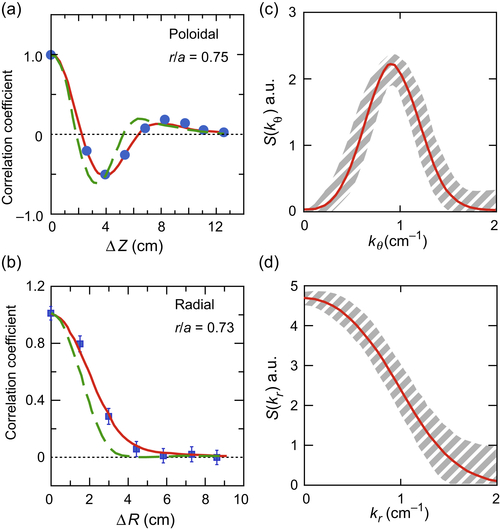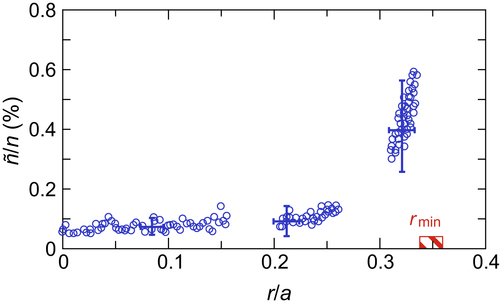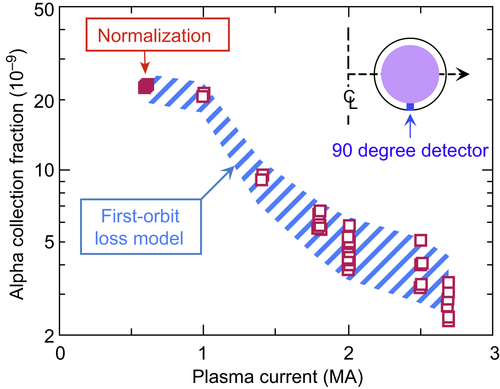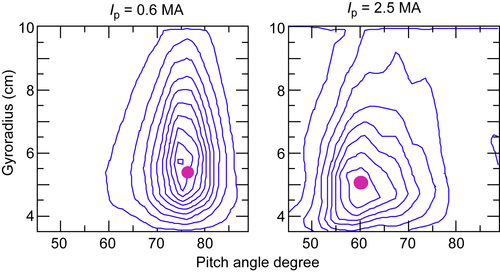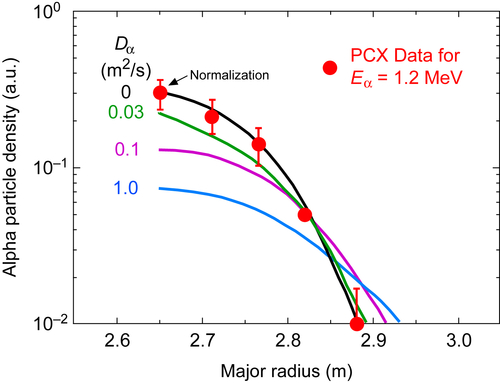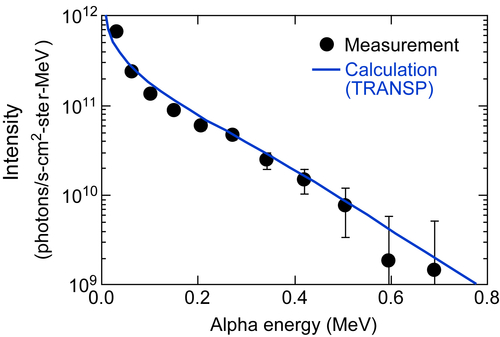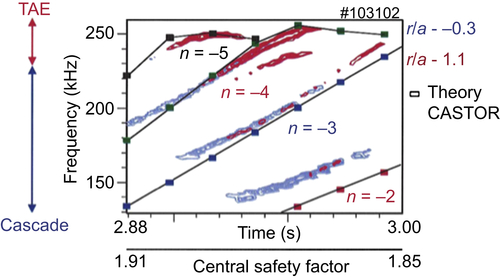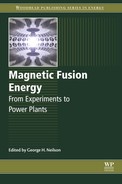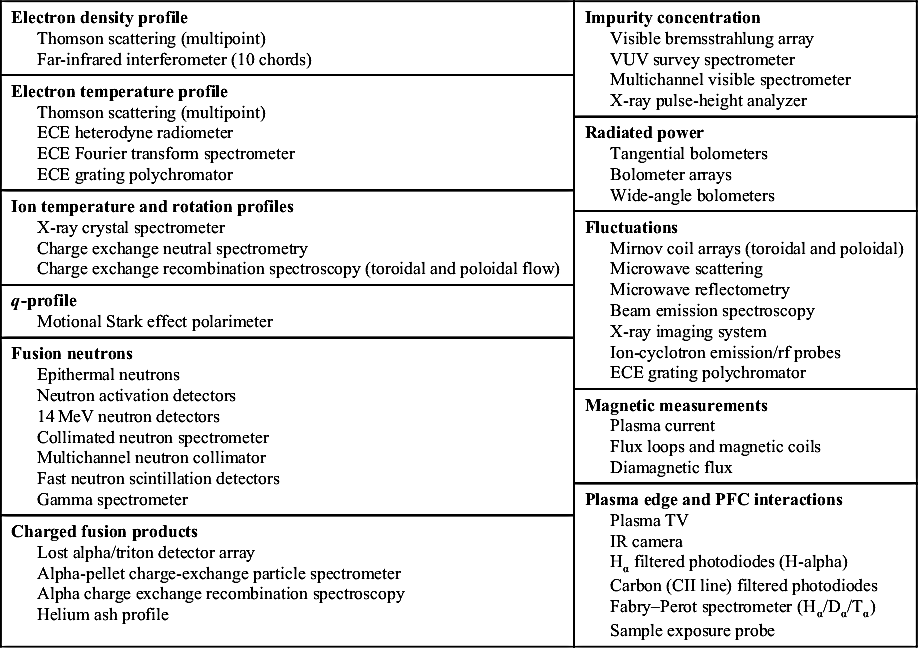Batha S.H, et al. Nucl. Fusion. 1995;35:1463.
Beer M.A, et al. Phys. Plasmas. 1997;4:1792.
Bell M.G, et al. Plasma Phys. Contr. Fusion. 1986;28:1329.
Bell M.G, et al. In: Plasma Physics and Controlled Nuclear Fusion Research 1988 (Proc. 12th Intl. Conf., Nice; IAEA, Vienna, 1989). vol. 1. 1988:27.
Bell M.G, et al. Nucl. Fusion. 1992;32:1585.
Bell M.G, et al. In: Plasma Physics and Controlled Nuclear Fusion Research 1994 (Proc. 15th Intl. Conf., Seville; IAEA, Vienna, 1995). vol. 1. 1994:171.
Bell M.G, et al. Nucl. Fusion. 1995;35:1429.
Bell M.G, et al. Phys. Plasmas. 1997;4:1714.
Bell M.G, et al. Plasma Phys. Contr. Fusion. 1999;41 A719.
Bernabei S, et al. In: Proc. 12 Topical Conference on Radio Frequency Power in Plasmas, Savannah, 1997. New York: CP403, AIP; 1997:69.
Bickerton R.J, Connor J.W, Taylor J.B. Nature. 1971;229:110.
Boivin R.L, et al. Nucl. Fusion. 1993;33:449.
Breizman B.N, et al. Phys. Plasmas. 2003;10:3649.
Bretz N, et al. Rev. Sci. Inst. 1988;59:1538.
Bretz N, et al. In: Controlled Fusion and Plasma Heating (Proc. 17th EPS Conf., Amsterdam, 1990; Europhysics Conf. Abs.). vol. 4. 1990:1544.
Bretz N, et al. In: Plasma Physics and Controlled Nuclear Fusion Research 1992 (Proc. 14th Intl. Conf., Würzburg, 1992; IAEA, Vienna, 1993). vol. 1. 1992:551.
Budny R.V. Nucl. Fusion. 1994;34:1247.
Bush C.E, et al. In: Plasma Physics and Controlled Nuclear Fusion Research 1990 (Proc. 13th Intl. Conf., Washington; IAEA, Vienna, 1991). vol. 1. 1990:309.
Bush C.E, et al. Phys. Rev. Lett. 1990;65:424.
Chang Z, et al. Nucl. Fusion. 1994;34:1309.
Chang Z, et al. Phys. Rev. Lett. 1995;74:4663.
Chang Z, et al. Phys. Rev. Lett. 1996;76:1071.
Chang Z, et al. Phys. Plasmas. 1997;4:1610.
Cordey J.G, et al. Nucl. Fusion. 1999;39:301.
Darrow D.S, et al. Phys. Plasmas. 1996;3:1875.
Darrow D.S, et al. Nucl. Fusion. 1997;37:939.
Dawson J, et al. Phys. Rev. Lett. 1971;26:1156.
Durst R.D, et al. Rev. Sci. Inst. 1992;63:4907.
Durst R.D, et al. Phys. Rev. Lett. 1993;71:3135.
Dylla H.F, et al. J. Nucl. Mater. 1990;176–177:337.
Efthimion P.C, et al. Phys. Rev. Lett. 1984;52:1492.
Efthimion P.C, et al. In: Plasma Physics and Controlled Nuclear Fusion Research 1984 (Proc. 10th Intl. Conf., London, 1984; IAEA, Vienna, 1985). vol. 1. 1984:29.
Efthimion P.C, et al. Phys. Fluids B. 1991;3:2315.
Efthimion P.C, et al. Phys. Rev. Lett. 1991;66:421.
Efthimion P.C, et al. In: Plasma Physics and Controlled Nuclear Fusion Research 1994 (Proc. 15th Intl. Conf., Seville; IAEA, Vienna, 1995). vol. 1. 1994:289.
Efthimion P.C, et al. Phys. Rev. Lett. 1995;75:85.
Efthimion P.C, et al. Nucl. Fusion. 1999;39:1905.
Ernst D.R, et al. Phys. Plasmas. 2000;7:615.
Eubank H.P, et al. In: Plasma Physics and Controlled Nuclear Fusion Research 1978 (Proc. 7th Intl. Conf. Innsbruck; IAEA, Vienna, 1979). vol. I. 1978:167.
Evensen H.T, et al. Rev. Sci. Inst. 1995;66:845.
Evensen H.T. Nucl. Fusion. 1998;38:237.
Evensen H.T, et al. Nucl. Fusion. 1999;29:133.
Fonck R.J, et al. Rev. Sci. Inst. 1990;61:3487.
Fonck R.J, et al. Phys. Rev. Lett. 1993;70:3736.
Fonck R.J, et al. In: Plasma Physics and Controlled Nuclear Fusion Research 1994 (Proc. 15th Intl. Conf., Seville, 1994; IAEA, Vienna, 1995). vol. 1. 1994:53.
Fredrickson E.D, et al. Nucl. Fusion. 1987;27:1897.
Fredrickson E.D, et al. Phys. Rev. Lett. 1991;65:2869.
Fredrickson E.D, et al. Nucl. Fusion. 1993;33:141.
Fredrickson E.D, et al. Nucl. Fusion. 1993;33:1759.
Fredrickson E.D, et al. Phys. Plasmas. 1995;2:4216.
Fredrickson E.D, et al. Phys. Plasmas. 1996;3:2320.
Fredrickson E.D, et al. Phys. Plasmas. 1997;4:1589.
Fredrickson E.D, et al. Phys. Plasmas. 2000;7:5051.
Fredrickson E.D, et al. Phys. Plasmas. 2015;22:032501.
Fu G.Y, et al. Phys. Rev. Lett. 1995;75:2336.
Furth H.P, et al. Nucl. Fusion. 1990;30:1799.
Goldston R.J. Plasma Phys. Contr. Fusion. 1984;26:87.
Greenwald M, et al. Nucl. Fusion. 1988;28:2199.
Grisham L.R, et al. Phys. Rev. Lett. 1991;67:66.
Grisham L.R, et al. Phys. Plasmas. 1994;1:3996.
Hawryluk R.J, et al. Plasma Phys. Contr. Fusion. 1991;33:1509.
Hawryluk R.J, et al. Phys. Rev. Lett. 1994;72:3530.
Hawryluk R.J, et al. In: Plasma Physics and Controlled Nuclear Fusion Research 1994 (Proc. 15th Intl. Conf., Seville; IAEA, Vienna, 1995). vol. 1. 1994:11.
Hawryluk R.J, et al. Phys. Plasmas. 1998;5:1577.
Hawryluk R.J. Rev. Mod. Phys. 1998;70:537.
Hawryluk R.J. Phil. Trans. Royal Soc. Lond. A. 1999;357:443.
Herrmann H.W, et al. Nucl. Fusion. 1996;37:293.
Hill K.W, et al. Phys. Plasmas. 1999;6:877.
Hosea J, et al. In: Plasma Physics and Controlled Nuclear Fusion Research (Proc. 13th Intl. Conf., Washington, 1990; IAEA, Vienna, 1991). vol. 1. 1990:669.
Hosea J, et al. In: Ryan P, Intrator T, eds. Proc. 12 Topical Conference on Radio Frequency Power in Plasmas, Savannah, 1997. New York: CP403, AIP; 1997:77.
Janos A.C, et al. Rev. Sci. Instrum. 1992;63:4720.
Janos A.C, et al. Nucl. Fusion. 1996;36:475.
Johnson L.C, et al. In: Proc. 21st EPS Conf. Contr. Fusion Plasma Phys., Montpellier, 1994. Europhysics Conf. Abs. 18B pt. 1994:182.
Kesner J, et al. Phys. Fluids B. 1993;5:2525.
Kim J.S, et al. Phys. Rev. Lett. 1997;79:841.
Kimura H, et al. Nucl. Fusion. 1998;38:1303.
Kissick M.W, et al. Phys. Fluids B. 1993;5:3619.
Kissick M.W, et al. Nucl. Fusion. 1994;34:349.
Kotschenreuther M, et al. Phys. Plasmas. 1995;2:2381.
LeBlanc B.P, et al. Phys. Rev. Lett. 1999;82:331.
Levinton F, et al. Phys. Rev. Lett. 1995;75:4417.
Majeski R, et al. Phys. Rev. Lett. 1994;73:2204.
Majeski R, et al. In: Plasma Physics and Controlled Nuclear Fusion Research (Proc. 15th Intl. Conf., Seville, 1994; IAEA, Vienna, 1995). vol. 1. 1994:443.
Majeski R, et al. Phys. Plasmas. 1996;3:2006.
Majeski R, et al. In: Ryan P, Intrator T, eds. Proc. 12 Topical Conference on Radio Frequency Power in Plasmas, Savannah, 1997. New York: CP403, AIP; 1997:73.
Mansfield D, et al. Phys. Plasmas. 1996;3:1892.
Mansfield D, et al. Nucl. Fusion. 2001;41:1823.
Mazzucato E, Nazikian R. Plasma Phys. Contr. Fusion. 1991;33:261.
Mazzucato E, Nazikian R. Phys. Rev. Lett. 1993;71:1840.
Mazzucato E, et al. In: Proc. 22th EPS Conf. on Controlled Fusion and Plasma Physics, Innsbruck, l995. Europhysics Conf. Abs, vol. 19C, pt. IV. 1995:109.
Mazzucato E, et al. Phys. Rev. Lett. 1996;77:3145.
Mazzucato E, et al. In: Fusion Energy 1996 (Proc. 16th Intl. Conf., Montreal, 1996; IAEA, Vienna, 1997). vol. 1. 1996:913.
McDonald D.C, et al. Nucl. Fusion. 2007;47:147.
McGuire K.M, et al. Phys. Plasmas. 1995;2:2176.
McKee G, et al. Rev. Sci. Instrum. 1995;66:643.
McKee G.R, et al. Nucl. Fusion. 1997;37:501.
Meade D.M, et al. In: Plasma Physics and Controlled Nuclear Fusion Research 1990 (Proc. 13th Intl. Conf., Washington; IAEA, Vienna, 1991). vol. 1. 1990:9.
Medley S.S, et al. Rev. Sci. Instrum. 1996;67:3122.
Medley S.S, et al. Nucl. Fusion. 1998;38:1283.
Mikkelsen D.R, Scott S.D, Dorland W. Phys. Plasmas. 1997;4:1362.
Mueller D, et al. Fusion Technol. 1996;30:251.
Mueller D, et al. In: Fusion Engineering 1997 (Proc. 17th IEEE/NPSS Symp. Fusion Engineering, San Diego; IEEE, Piscataway New Jersey, IEEE 97CH36131). vol. 1. 1997:279.
Murakami M, et al. Plasma Phys. Contr. Fusion. 1986;28:17.
Nagayama Y, et al. Phys. Rev. Lett. 1992;69:2376.
Nagayama Y, et al. Phys. Fluids B. 1993;5:2571.
Nagy A, et al. In: Fusion Engineering 1997 (Proc. 17th IEEE/NPSS Symp. Fusion Engineering, San Diego; IEEE, Piscataway New Jersey, IEEE 97CH36131). vol. 1. 1997:317.
Nazikian R, et al. Phys. Rev. Lett. 1997;78:2976.
Nazikian R, et al. Phys. Plasmas. 1998;5:1703.
Nazikian R, et al. Phys. Rev. Lett. 2003;91:125003.
Park H, et al. Phys. Plasmas. 1997;4:1699.
Paul S.F, et al. Phys. Fluids B. 1992;4:2922.
Paul S.F, et al. Rev. Sci. Inst. 1992;63:4921.
Perkins F.W, et al. Phys. Fluids B. 1993;5:477.
Perry E, et al. In: Fusion Engineering 2003 (Proc. 20th IEEE/NPSS Symp.; IEEE, Piscataway, NJ, 2003). 2003:256.
Petrov M.P, et al. Nucl. Fusion. 1995;35:1437.
Phillips C.K, et al. Phys. Plasmas. 1995;2:2727.
Phillips C.K, et al. Phys. Rev. Lett. 1997;79:1050.
Phillips C.K, et al. Nucl. Fusion. 2000;40:461.
Porcelli F, et al. In: Controlled Fusion and Plasma Heating (Proc. 17th EPS Conf. Amsterdam, 1990. Europhysics Conf. Abs. 14B. 1990:327.
Raftopoulos S, et al. In: Fusion Engineering 2002, Proc. 19th IEEE/NPSS Symp. Piscataway, NJ: IEEE; 2002:465.
Rogers J.H, et al. In: Fusion Energy 1996 (Proc. 16th Intl. Conf., Montreal, 1996; IAEA, Vienna, 1997). vol. 1. 1996:317.
Rogers J.H, et al. In: Ryan P, Intrator T, eds. Proc. 12 Topical Conference on Radio Frequency Power in Plasmas, Savannah, 1997. New York: CP403, AIP; 1997:13.
Ruskov E, Heidbrink W.W, Budny R.V. Nucl. Fusion. 1995;35:1099.
Ruskov E, et al. Phys. Plasmas. 1999;6:3247.
Sabbagh S.A, et al. Phys. Fluids B. 1991;3:2277.
Sabbagh S.A, et al. In: Plasma Physics and Controlled Nuclear Fusion Research 1994 (Proc. 15th Intl. Conf., Seville; IAEA, Vienna, 1995). vol. 1. 1994:663.
Sabbagh S.A, et al. In: Fusion Energy 1996 (Proc. 16th Intl. Conf., Montreal; IAEA, Vienna, 1997). vol. 1. 1996:921.
Schmidt G.L, et al. In: Controlled Fusion and Plasma Physics (Proc. 11th IAEA Intl. Conf., Kyoto, 1986; IAEA, Vienna, 1986). vol. 1. 1986:171.
Scott S.D, et al. In: Plasma Physics and Controlled Nuclear Fusion Research 1988 (Proc. 12th Intl. Conf., Nice; IAEA, Vienna, 1999). vol. 1. 1988:655.
Scott S.D, et al. In: Plasma Physics and Controlled Nuclear Fusion Research 1990 (Proc. 13th Intl. Conf., Washington; IAEA, Vienna, 1991). vol. 1. 1990:235.
Scott S.D, et al. Phys. Fluids B. 1990;2:1300.
Scott S.D, et al. Phys. Plasmas. 1995;2:2299.
Scott S.D, et al. Phys. Scr. 1996;51:394.
Scott S.D, et al. In: Fusion Energy 1996 (Proc. 16th IAEA Fusion Energy Conference, Montreal; IAEA, Vienna, 1997). vol. 1. 1996:573.
Sharapov S.E, et al. Phys. Plasmas. 2002;9:2027.
Skinner C.H, et al. J. Nucl. Mater. 2001;290–293:486.
Skinner C.H, et al. Fusion Sci. Technol. 2004;45:11.
Skinner C.H, et al. Fusion Sci. Technol. 2008;54:891.
Spong D, et al. Nucl. Fusion. 1995;35:1687.
Strachan J.D, et al. Phys. Rev. Lett. 1987;58:1004.
Strachan J.D, et al. J. Nucl. Mater. 1987;145–147:186.
Strachan J.D, et al. Proc. 14st EPS Conf. Contr. Fusion Plasma Phys., Madrid, 1987. Europhysics Conf. Abs. 1987;vol. 11D(pt. I):152.
Strachan J.D, et al. Nucl. Fusion. 1993;33:991.
Strachan J.D, et al. Phys. Rev. Lett. 1994;72:3526.
Strachan J.D, et al. Nucl. Fusion. 1996;36:1189.
Strachan J.D, et al. Nucl. Fusion. 1999;39:919.
Strait E.J, et al. Phys. Rev. Lett. 1995;75:4421.
Stratton B.C, et al. Nucl. Fusion. 1996;36:1586.
Synakowski E.J, et al. Phys. Rev. Lett. 1990;65:2255.
Synakowski E.J, et al. In: Proc. 22nd EPS Conf. on Controlled Fusion and Plasma Physics, Bournemouth, 1995. Europhysics Conf. Abs, Part III. 1995:13.
Synakowski E.J, et al. Phys. Rev. Lett. 1995;75:3689.
Synakowski E.J, et al. Phys. Plasmas. 1997;4:1736.
Taylor G, et al. Plasma Phys. Contr. Fusion. 1994;36:523.
Taylor G, et al. Phys. Rev. Lett. 1996;76:2722.
Thomas P.R, et al. Phys. Rev. Lett. 1998;80:5548.
Troyon F, et al. Plasma Phys. Contr. Fusion. 1984;26:209.
Ulrickson M, et al. J. Nucl. Mater. 1990;176–177:44.
White R.B, et al. Phys. Plasmas. 1996;3:3043.
Wilson J.R, et al. In: Plasma Physics and Controlled Nuclear Fusion Research (Proc. 14th Intl. Conf., Würzburg, 1992; IAEA, Vienna, 1993). vol. 1. 1992:661.
Wilson J, et al. Phys. Rev. Lett. 1995;75:842.
Wilson J.R, et al. Phys. Plasmas. 1998;5:1721.
Wong K.L, et al. Phys. Rev. Lett. 1991;66:1874.
Wong K.L, et al. Plasma Phys. Contr. Fusion. 1994;36:879.
Wong K.L, et al. Phys. Rev. Lett. 1996;76:2286.
Yushmanov P.H, et al. Nucl. Fusion. 1990;30:1999.
Zarnstorff M, et al. In: Plasma Physics and Controlled Nuclear Fusion Research 1988 (Proc. 12th Intl. Conf., Nice; IAEA, Vienna, 1989). vol. 1. 1988:183.
Zarnstorff M.C, et al. Phys. Rev. Lett. 1988;60:1306.
Zarnstorff M.C, et al. In: Plasma Physics and Controlled Nuclear Fusion Research 1990 (Proc. 13th Intl. Conf., Washington; IAEA, Vienna, 1991). vol. 1. 1990:109.
Zarnstorff M.C, et al. In: Plasma Physics and Controlled Nuclear Fusion Research 1994 (Proc. 15th Intl. Conf., Seville; IAEA, Vienna, 1995). vol. 1. 1994:18.
Zweben S.J, et al. Proc. 21st EPS Conf. Contr. Fusion Plasma Phys., Montpellier, 1994. (Europhysics Conf. Abs.). 1994;vol. 18B(pt. I):290.
Zweben S.J, et al. Nucl. Fusion. 1995;35:893.
Zweben S.J, et al. Nucl. Fusion. 1999;39:1097.
Zweben S.J, et al. Nucl. Fusion. 2000;40:91.

